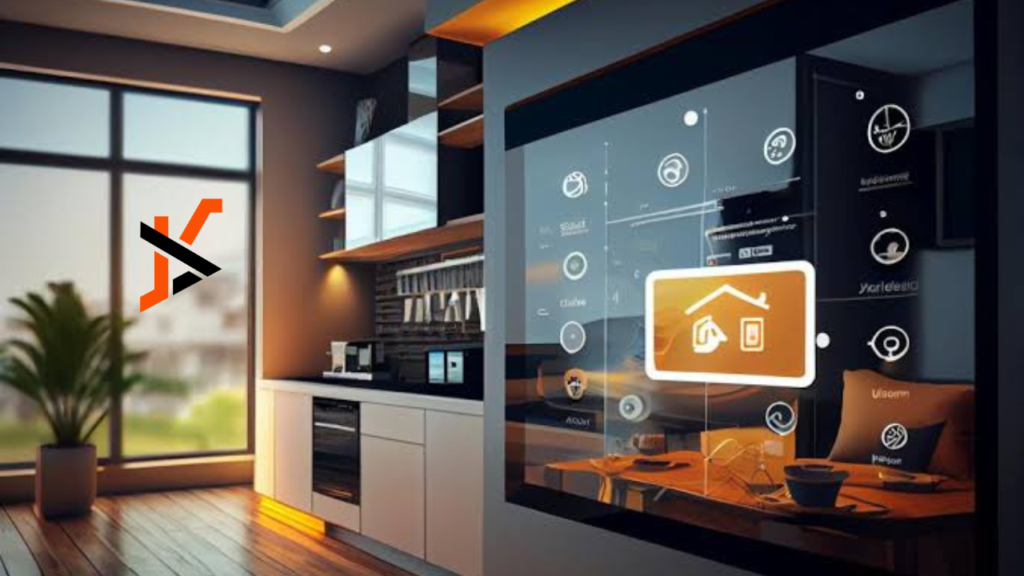Amid the bustling crescendo of our digital age, smart living is no longer a futuristic notion—it’s a tangible, present-day experience altering the fabric of our daily lives. Welcome to the future, where technology seamlessly merges with the sanctuary of the home, promising convenience, security, and eco-friendliness at a mere voice command or a tap on your smartphone.
But what exactly is smart living, and how do the latest smart home solutions cater to the diverse lifestyles of tech enthusiasts, homeowners, and digital nomads? In this comprehensive guide, we’ll not only demystify the emerging smart home technologies but also reveal how these innovations are shifting the paradigm of home life, one revolution at a time.
The Essence of Smart Living in Our Modern World
Smart living is the epitome of convenience and efficiency, enriching our home experiences with cutting-edge technology. It’s no longer just about sleek gadgets and futuristic gizmos; it’s a central hub that harmonizes the various facets of our lives. With smart living, mundane tasks become automated, personal preferences are learned and anticipated, and the home environment evolves to cater seamlessly to the inhabitants’ needs.
Navigating the Smart Home Ecosystem
At the core of every smart home is a network of interconnected devices designed to ease the daily burdens and enhance the overall living experience. The smart home ecosystem is a synergy of devices like voice assistants, smart thermostats, lighting, security, and entertainment systems, all working in harmony to create an intelligent living environment.
.
The Smart Home Advantage for Every Lifestyle
Tech Enthusiasts’ Paradise
For the tech-savvy, the allure of controlling a home’s lighting, climate, entertainment, and security through a smartphone app or voice command is irresistible. Device compatibility, cross-platform integration, and the prospect of ‘hacking’ your home to perform tasks limitlessly are all part of the fascination for these early adopters.
Home Sweet Smart Home for Homeowners
Smart living is a godsend for homeowners, offering remote control of their property, energy savings, heightened security through advanced surveillance systems, and even the detection of water leaks. The ease of setup and management through user-friendly interfaces makes the switch to smart living both accessible and rewarding, with added property value that cannot be overlooked.
Digital Nomads’ Ever-Present Comforts
For the constantly traveling digital nomad, the ability to monitor and control the home environment from any corner of the globe brings invaluable peace of mind. From adjusting the thermostat for pets to ensuring packages are securely delivered inside the home, smart home technology provides a network of virtual caretakers, maintaining the home while you’re away.
Real-world Impact and Case Studies
The implementation of smart home solutions is not just a theoretical advantage—it’s a real-world game-changer. Homeowners are enjoying reduced energy bills by approximating their living patterns, and security has been elevated to a state where they can remotely detect and deter potential threats.
In a bustling city scenario, a digital nomad relies on smart locks to admit authorized personnel in their home for work, monitoring via smart cameras to keep an eye on the operations, and even deterring packages from being left out with remote-controlled delivery processes.
Beginning Your Smart Home Journey
- Assess Your Needs and Prioritize
Understand where smart devices can fill a gap in your life. Whether it’s automating your lighting for a comforting ambiance, upgrading to a smart security system for peace of mind, or optimizing your energy usage, start with the most relevant areas.
- Choose the Right Devices and Ecosystem
While there’s a rich market of smart home devices, choose those that not only suit your needs but also can integrate well with each other. A comprehensive ecosystem ensures all your devices work in unison to deliver a cohesive smart home experience.
- Consider Safety and Security
Prioritize systems with strong encryption and up-to-date software to protect your smart home from cyber threats. Smart doorbells, locks, and surveillance cameras can add layers of security, but their reliability is key.
- Create a User-friendly Environment
Technology should serve you, not the other way around. Choose devices with intuitive interfaces, whether on an app or a control panel, to make managing your smart home a breeze.
- Sustainability and Energy Efficiency
Look for smart devices designed to optimize energy usage. Smart lighting that dims or turns off when not in use, or a smart thermostat that learns and schedules your preference, can save both energy and money.
Trends Shaping the Future of Smart Living
The future of smart home technology is an exciting prospect, as advancements promise to further personalize and enhance the in-home experience. Imagine homes that can detect your mood and adjust the lighting and music to lift your spirits, or refrigerators that can suggest recipes based on the contents within, optimizing food waste and culinary delights.
Voice assistants, already powerful, are expected to become even more sophisticated, with the capability to engage in complex conversations and handle multiple tasks simultaneously. Integration with wearable devices may provide health-related data, prompting the home environment to make adjustments that cater to your well-being.
Conclusion
Smart home technology is not just a matter of convenience; it’s a gateway to a lifestyle that is personalized, efficient, and secure. The smart home revolution promises a future where the technology we’ve come to rely on is seamlessly integrated into our daily lives, transforming routine tasks into moments of simplicity and joy.
.

